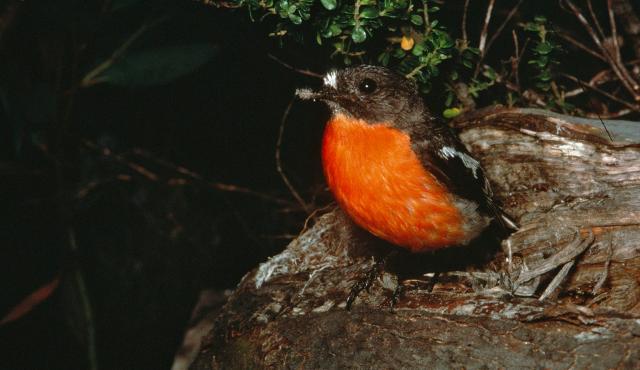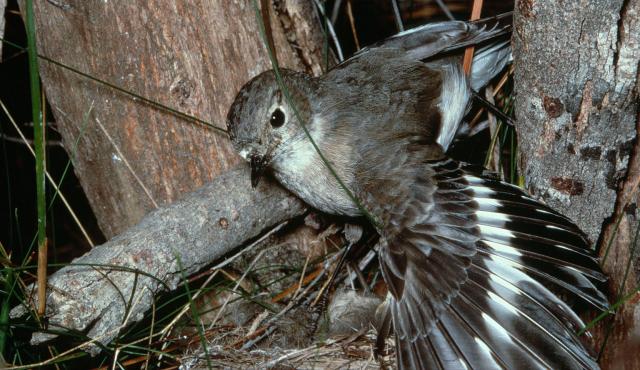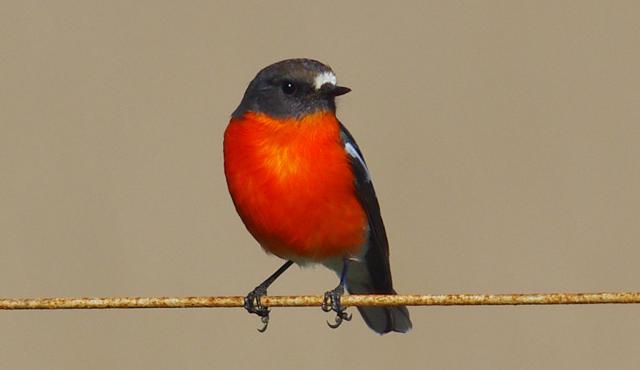A range of teacher professional learning programs will be developed to accompany the Biodiversity of the Western Volcanic Plains online outreach...




Flame Robin
Petroica phoenicea
Breeds from August-January in the high country, migrating south in autumn and winter. A bulky cup nest is built in a tree cavity or fork of a tree up to 20 m high.
| Details | Description |
| Type | Bird |
| Group | Robin |
| Identifying Characteristics | |
| Distinctive Markings | The male is dark grey with a brilliant flame breast and throat, prominent white mark above the bill, white wing marks and white outer tail feathers. |
| Diet | Carnivore, invertebrates. |
| Habitat | Frequents a range of habitats in different seasons. In summer tends to be found in forests and woodlands up to 1800 m. In autumn-winter may be found in flocks in open woodlands, grasslands, paddocks and parks. |
| Native Status | Native to Australia |
| Sounds | A high pitched trill "chrip-a-chip, crip-a-chip, chirripa-tirrrrip". Also a slower "whit, whit, whit -" and a harsh scolding call. |
| Taxonomy | |
| Phylum | Chordata |
| Class | Aves |
| Order | Passeriformes |
| Family | Petroicidae |
| Genus | Petroica |
| Species | phoenicea |

Distribution maps indicate current and historic locations where species have been sighted.
Source: Atlas of Living Australia
| Conservation Status | |
| DEPI Advisory List | Not listed |
| FFG Act | Not listed |
| EPBC Act | Not listed |
The conservation status of species is listed within Victoria and Australia.
The Department of Environment and Primary Industry (DEPI) Advisory List consists of non-statutory advisory lists of rare or threatened flora and fauna within Victoria.
The Flora and Fauna Guarantee Act 1988 (FFG Act) lists threatened species in Victoria. Under the Act, an Action Statement is produced for each listed species.
The Environment Protection and Biodiversity Conservation Act 1999 (EPBC Act) is the Australian Government’s key piece of environmental legislation, listing nationally threatened native species and ecological communities.



